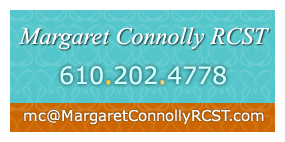(11/5/2012) Sometimes clients have a dramatic response to their first craniosacral session, and sometimes not. Clients who are likely to feel less than others might include elderly people or people suffering from multiple debilitating conditions.
Say that over your lifetime you’ve had a few surgeries and you have irritable bowel syndrome plus migraines. Or you’re a breast cancer survivor who’s had radiation and chemo; reconstruction surgery has moved muscle from one place in your body to another; and you have scoliosis.
In situations like these there’s already been a lot of disruption to how the body would like to be able to move and communicate internally. Another such situation would be the case of someone who’s extremely obese. Something has already gone wrong with the body’s internal signaling, such that the brain isn’t getting the message that enough food has been consumed.
So on the one hand – for the purposes of this explanation I’ll separate “the body” and “the person” – the body can’t yet make large and noticeable changes, and on the other hand the person can’t feel the small initial changes that nevertheless are happening during treatment.
Of course it’s gratifying for both the client and the practitioner when a first session or two give dramatically observable results. And that does occur often.
But before your body/mind can really begin to activate natural self-corrective processes, two things have to happen.
First, your autonomic nervous system needs to come into a flexible state of balance. In our culture most often this means that you have to relax out of a tendency toward chronic “fight or flight” and have more access to the “rest and rebuild” part of the system. The social part of the nervous system that facilitates our human relating will also tend to come forward.
Second, the movement of the craniosacral system needs to free up. By “the craniosacral system” is meant everything from the cranium (your skull) to the sacrum (the big bone at the bottom of your spine), and what’s in between – your brain and spinal cord, the fluid bathing them, and the membranes that contain the tissues and the fluid. As a craniosacral practitioner, I’m able to feel how freely this structural complex is moving.
So while it may be nice if you feel a tingle or a flow of energy or some other interesting sensation during or after a session, what’s more significant at first is what I feel. And I’ll always give you my professional assessment of what’s happening, and what I recommend.
Among biodynamic craniosacral practitioners, there is a consensus that when you want to make real changes in a problem that’s bothering you, the best way to start is to do a few sessions, maybe four to six, in a relatively short time frame. After that, sessions can be spaced out.
Of course the goal is always to get you to the point where a particular problem is resolved or you feel that your health and well-being have significantly improved.
You might never need to come back again to address the condition that brought you to seek treatment in the first place. Or you might find that you need a session once or twice a year when you feel your condition hinting that it might start up again. Many people find this approach preferable to taking medication that doesn’t do the job very well and/or creates distressing side effects. I always advise that clients maintain their regular medical checkups.
Some people live in high-pressure situations and make craniosacral therapy a periodic part of their self-care. And still others choose to continue craniosacral therapy because they find it an important support to their personal development.



